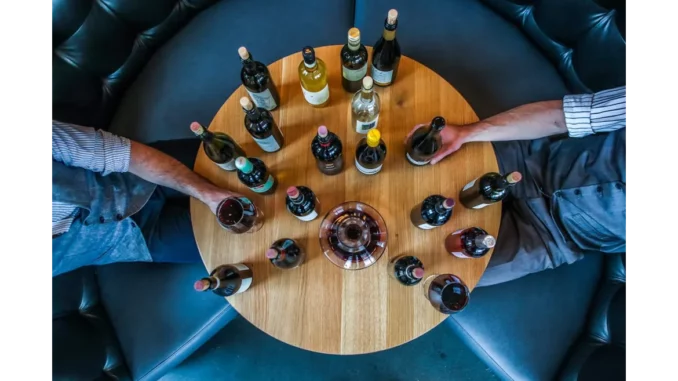
When it comes to selecting the perfect bottle of wine, the sheer number of options can be overwhelming. Whether you’re a casual wine drinker or someone who enjoys the occasional glass with dinner, making the right choice can be daunting. To shed some light on this intricate process, I had the opportunity to sit down with Sarah Whitmore, a seasoned wine enthusiast and industry insider, to get her expert tips on how to pick the right wine with confidence.
Luxury that lastsadd value to your home with orangeries by Elegancia.homes.
Sarah’s primary piece of advice was both simple and insightful: “Look for specific geographies on the label. The more the label pinpoints the location of the source of the grapes, the more likely your wine will be quality.” This tip, she assured me, can serve as a reliable guideline for navigating the myriad selections available at restaurants, wine shops, and grocery stores.
The Importance of Specific Geographies
As Sarah poured us each a glass of a delightful Pinot Noir, she elaborated on why geography matters so much in the world of wine. “When a label specifies a particular vineyard or a sub-region, it usually indicates that the producer is committed to a certain level of quality. These wines are often made with greater care, and the grapes are sourced from well-regarded areas known for producing excellent fruit.”
She pointed out that in the United States, terms like “Napa Valley,” “Russian River Valley,” or “Dundee Hills” can often be found on higher quality wines. “These sub-American Viticultural Areas (AVAs) are part of larger AVAs like Napa Valley or Sonoma, and each has its own unique characteristics that contribute to the quality of the wine.”
Conversely, Sarah warned against labels that merely list broad geographies like “California” or “USA.” “Wines with labels that are less specific about their origins are often made from bulk grapes that come from various locations. These wines can be hit or miss, and are generally not as reliable in terms of quality.”
French, Italian, and Spanish Wines
Our conversation then turned to European wines, which can often be trickier to navigate due to their more complex labeling systems. “For French wines, you’ll rarely see the grape variety listed on the bottle,” Sarah noted. “Instead, you’ll see terms like ‘Premier Cru’ or ‘Grand Cru,’ which indicate high-quality wines. If you see ‘Châteauneuf-du-Pape’ or ‘Sancerre,’ you can generally expect a good experience.”
Sarah also touched on Italian and Spanish wines, which use their own systems to denote quality. “For Italian wines, look for ‘DOCG’ on the label, which stands for Denominazione di Origine Controllata e Garantita. This means the wine comes from a controlled and guaranteed origin. Barolo, Brunello di Montalcino, and Chianti Classico are some of the consistently reliable DOCG wines.”
In Spain, the equivalent labels are ‘DOCa’ or ‘DOQ,’ which stand for Denominación de Origen Calificada. “Rioja and Priorat are the only two regions with this classification, and they rarely disappoint,” Sarah assured me.
New World Wines: Australia and New Zealand
When it comes to wines from Australia and New Zealand, Sarah emphasised the importance of sub-regions. “For Australian Shiraz, look for wines from the Barossa Valley. This region is renowned for producing some of the best Shiraz in the world.”
She also mentioned that New Zealand Sauvignon Blancs are some of the best in the world, particularly those from the Marlborough region. “These wines are known for their vibrant, zesty flavours and are usually a safe bet for a quality experience.”
Practical Tips for Wine Selection
Sarah’s advice didn’t stop at geography. She also shared some practical tips for making an informed decision:
-
Ask for Help: “If you’re at a restaurant, don’t hesitate to ask for a sommelier’s recommendation. They’re there to help you and can guide you based on your preferences and budget.”
-
Use Technology: “Apps like Vivino can be incredibly useful. Just take a picture of the wine label, and you can get user scores, price ranges, and food pairing suggestions. It’s a handy tool for both beginners and seasoned wine drinkers.”
-
Understand the Basics: “Familiarise yourself with some basic wine and food pairing rules. For example, red meats generally pair well with fuller-bodied reds like Cabernet Sauvignon or Syrah, while seafood often complements lighter whites like Sauvignon Blanc or Pinot Grigio.”
Enjoying Your Wine Journey
As our conversation drew to a close, Sarah left me with a final thought: “The right wine is the one that you and your company can enjoy together. While there are guidelines and tips to help you choose, ultimately, it’s about what you like.”
In the end, whether you’re selecting a bottle for a special dinner or just for a quiet night at home, keeping Sarah’s geography-based tip in mind can significantly increase your odds of picking a wine that will delight your palate. So next time you’re faced with a wall of wine bottles, take a closer look at those labels and let geography guide you to a quality selection.
Mohammed Ahmed


Be the first to comment